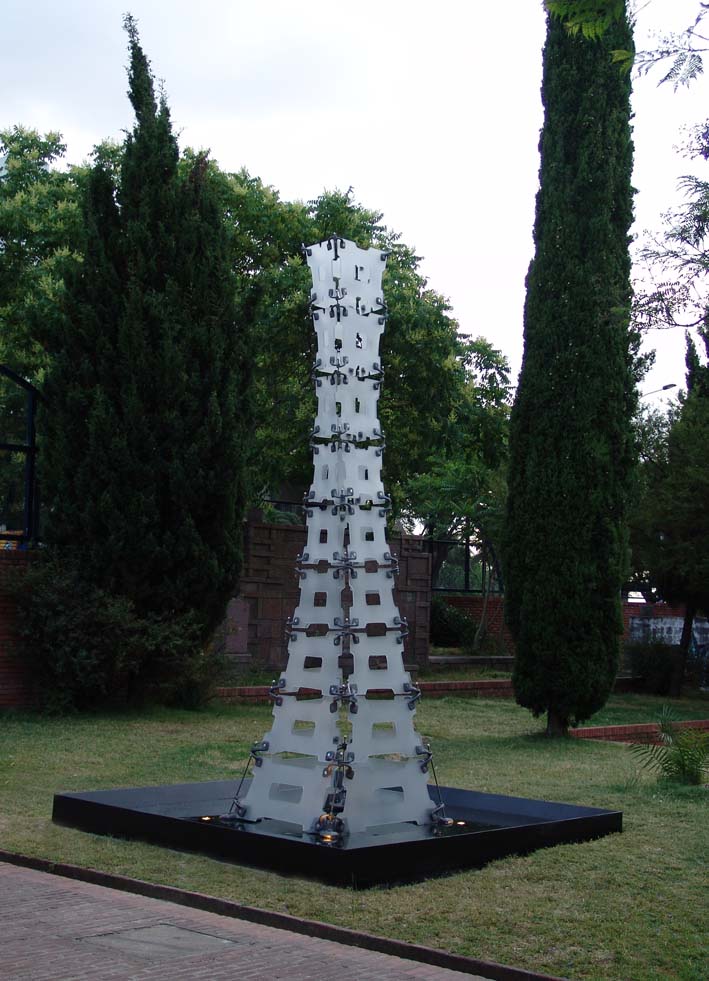|
|
D A N I
E L E S C A R D Ó
d a n i e l @ e s c a r d o . o r g |
|
NATIONAL MUSEUM VISUAL ARTS 2009
MONTEVIDEO
SCULPTURE INSTALATION
English
Español |

Text
Lic. Jacqueline Lacasa
Director
NATIONAL MUSEUM VISUAL ARTS
MONTEVIDEO
2009
The onward
work of an artistic project suggests a deep appreciation of
each of its parts as well as the development of ideas which
thereupon transmit, communicate and unfold new ways of
perception.
Such accomplished movement is evidenced in the diverse work
of sculptor Daniel Escardó.
In the progress of his work, it has been possible to
establish forms of construction that frame his investigation,
reaffirmed in the possibility of x-raying matter,
deconstructing its stages of transformation and able to
place the three-dimensional body of the object in the field
of artistic production. |

Thus, the
artist performs his series: “Trees of Barbarism”, committing
himself to the daily transition of living nature. He traps
the lines that make up its unique anatomy on photographic
plates, plays with its bone structure, captures space light
within its cavities, turning this into matter and shaping
the transparent spaces into further quests.
His new work is a portion of this project in process,
revealing a larger scale piece, situated in the gardens of
the National Museum of Visual Arts. Its peculiar nature is
complemented by the landscaping design of the renowned
Architect Leandro Silva Delgado, in the midst of the
imminent and much desired recovery of this garden, this work
of art, in great stance, presents itself as: “Trans-lucid”.
|

Trans-Lucida Aluminum sanded
polycarbonate and stainless steel 40 x 47 x 170 inches 2008
|
|
 |

Reflected on a pool of water, its structure is built with
impeccable definition, it holds itself on pieces that
diminish in size, like vertebrae. The surrounding landscape
is interspersed with hollow figures that filter the
vegetation, reminding us, harmoniously, of the organic
origins of the work.
The site of the sculpture by night has movement, generated
by water, wind and light, resolving the fluctuating
circumstances of the object, allowing moreover, concurrent
to the Benjaminian point of view, the ability to see and be
seen throughout the object, through the vital aura provided
by this work of art.
These signs especially, are able to convey diversity and
enjoyment on beholding this work of art. The artist
therefore achieves, as from his Trans-lucid, a direct effect
on the passer-by, going beyond what is contained inside the
Museum.
|
|
  |
|
|
|
  |
|
|
|
  |
|
|
|
  |
|
|
|
 |
|